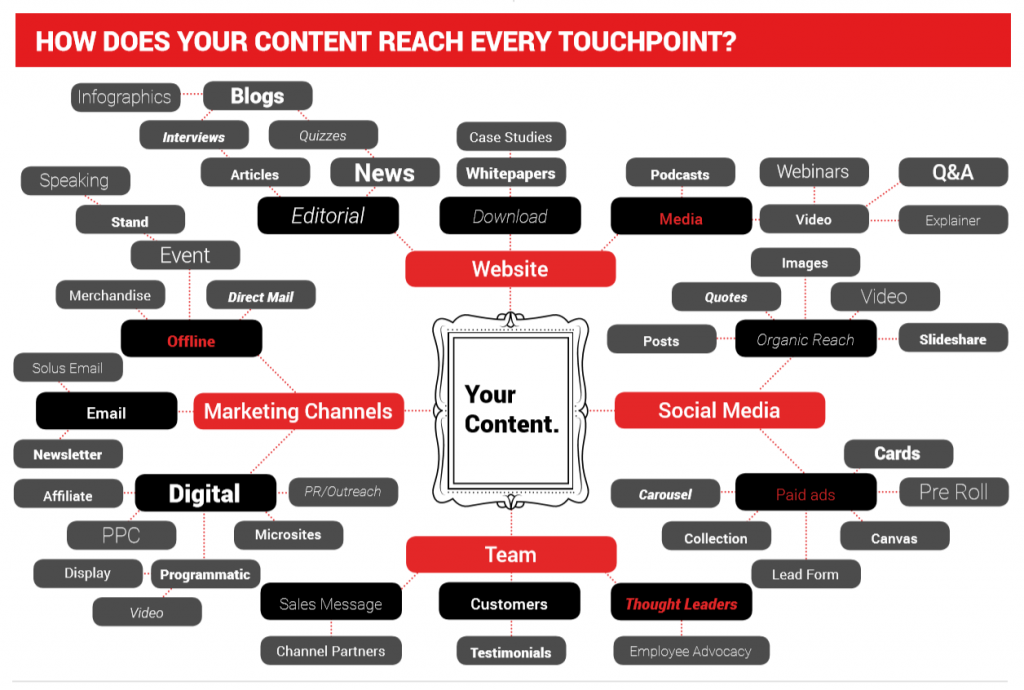You’d be hard pushed to find a marketer who doesn’t use a marketing funnel somewhere in their marketing strategy. Our relationship with funnels goes way back…
However, how accurate is our understanding of the funnel model? This article points out the fundamental flaw of looking at the marketing funnel the wrong way. Read on to discover how you can adopt the right perspective and in turn build better demand generation programs built on insight and accurate audience data.
Reading time: 5 minutes
How’s the marketing funnel model evolved through the years?
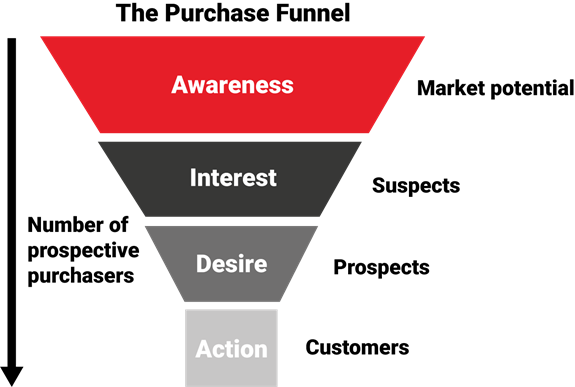
The AIDA (Awareness, Interest, Desire and Action) marketing model was invented in 1898 by Elias St. Elmo Lewis and underpins a lot of our thinking.
Originally this marketing staple gave us a flat view of the buyer’s journey, as a funnel, which was a useful analogy of how prospective customers travelled through our promotional mix in order to get to purchase. It represents the physiological stages required in order to fulfil the predetermined buyer journey.
Before the boom of digital marketing, the simplicity of this model was enough to benchmark your marketing strategy against, helping to identify the key touchpoints for engagement and sustained value exchanges.
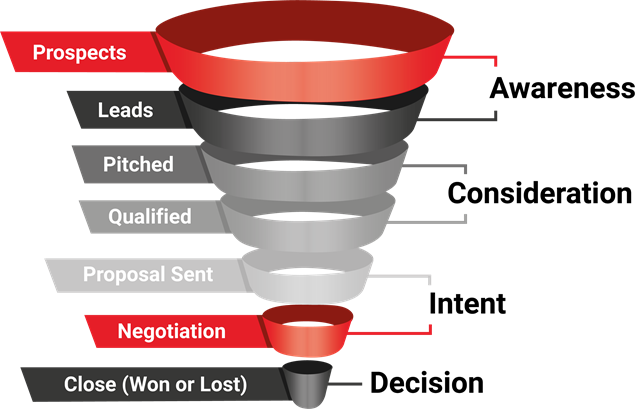
As with purchasing behavior, over time, this model has grown in sophistication, as we look at new tactics to track and push prospects through the funnel.
Many marketing efforts are geared towards pushing people down and reducing drop offs between stages.
While this framework can be useful, we need to remember that it’s not reality….
The buyer’s journey is rarely linear. It’s messy. They weave through different sections, wander off when they have no budget, ask their friends about your brand, tune into influencers and flex between channels – any number of these reasons can make content marketing unpredictable and harder to track, control and execute.
And with an average of 6.8 DMU members, the decision-making process is now longer and more complex. This all means we need to provide an environment where people can jump back and forwards without feeling trapped.
The funnel no longer becomes a paint by numbers exercise, rather, a descriptive model that accommodates the flexibility modern buyers now demand.
This requires a mind-set shift rather than a funnel overthrow.
It’s about relevance.
Understanding your community allows you to connect content in the right way, to drive value for the reader and delight your customers at the same time.
There is nothing wrong with our funnel per say, all it requires is a tweak in perspective – the audience’s perspective to be exact.
In the on-demand digital culture, it’s about the user being in control. We can’t control the users but we can anticipate their needs and drive long term value, if we use the right data-driven approach.
Rather than looking at it side on and thinking how to drag people though, we should be looking at the funnel from above. Your audience is in the centre of the funnel, and we need to stop them spilling out by surrounding them with content and helping them reach their ultimate destination.
“It’s not about what you want to say, it’s about what they want to hear…”
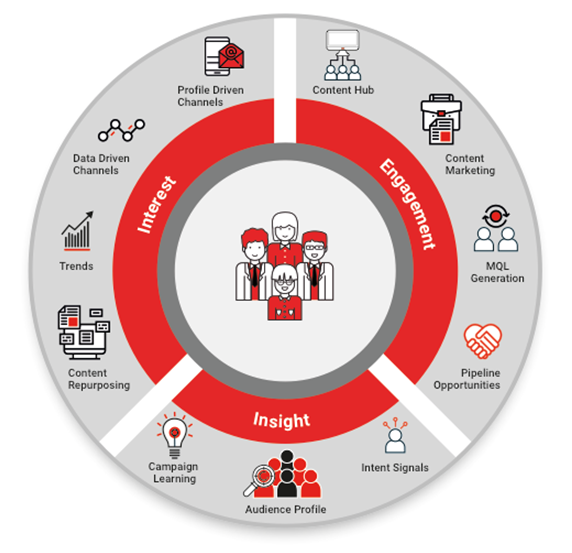
Look at the marketing funnel from above – with the audience at the centre
We think of it as surrounding your prospect with the right information to help them achieve what they need, on their own terms.
This reflects the important shift in the power dynamic between vendor and buyer, readdressing the balance to create an optimized environment for engagement.
There are 3 stages (or tactical devices) that make up this funnel perspective and rather than operating in a hierarchy they work simultaneously:
- Insight into what buyers care about
- Interest buyers in your brand
- Engage buyers to take action
To reiterate, it’s not a linear journey. Your prospective customers can be interacting with your brand in all of these ways at different times and your job is to support the process. We advocate taking your prospects round this cycle and learning from each revolution, so you can continue to add value the longer they stay with your brand.
In essence, it’s a perpetual Helter Skelter audience members choose to stay on because they continuously derive value at every turn.
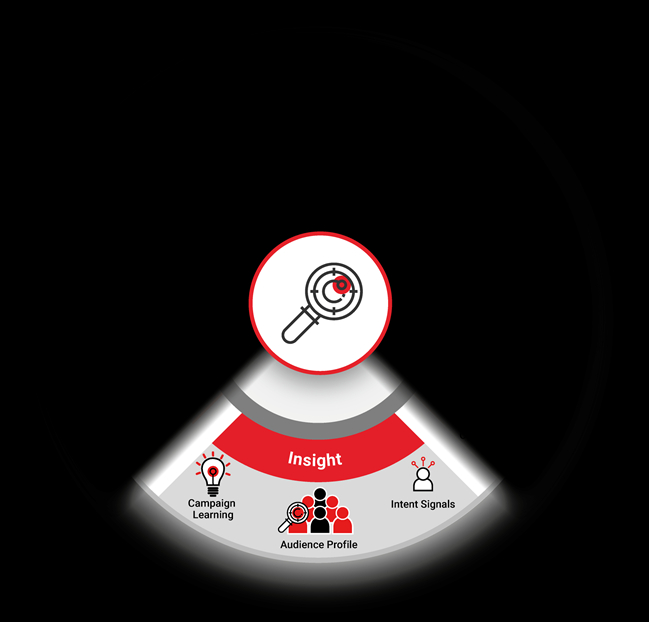
Let’s start with Insight
Most demand generation strategies rely on content marketing. However, without knowing what your audience cares about you can’t create content that meets their needs, or interact with them on the channels they frequent.
Understanding what really motivates your prospects enables you to develop highly customized content that translates into sales. Too many businesses churn out ‘Everyman’ content that has wide reach but no effectiveness – around 2/3 of marketers create content without any sort of documented strategy [Contently]. Content that doesn’t help your prospects in some way is simply a waste of resources.
To create targeted content, you need to understand a range of things about your customers, from job titles and purchasing power to the channels they use. In addition, you’re likely to be dealing with multiple individuals within a decision making unit (DMU), each with a unique set of characteristics and information needs.
Extending your customer insight to include third party intent data will shed light on behaviors, motivations and preferences that will enable you to design more accurate, precision-based campaigns.
There are 5 types of intent data that frame our approach to audience insight, and we believe these should be a priority for all B2B marketers:
- Searching (keyword & queries)
- Browsing (cookies & categories)
- Action (clicks & downloads)
- Firmographic (ABM)
- Predictive (lookalike modelling)
We discuss all 5 types of intent data in our article Ready or Not? 5 Types of Buyer Intent Data to Gauge B2B Engagement ready to read now.
Once you have a robust method of acquiring and acting on crucial audience insights you have the means to uncover what your audiences want to hear.
This brings us to the second component of our marketing funnel…
Interest
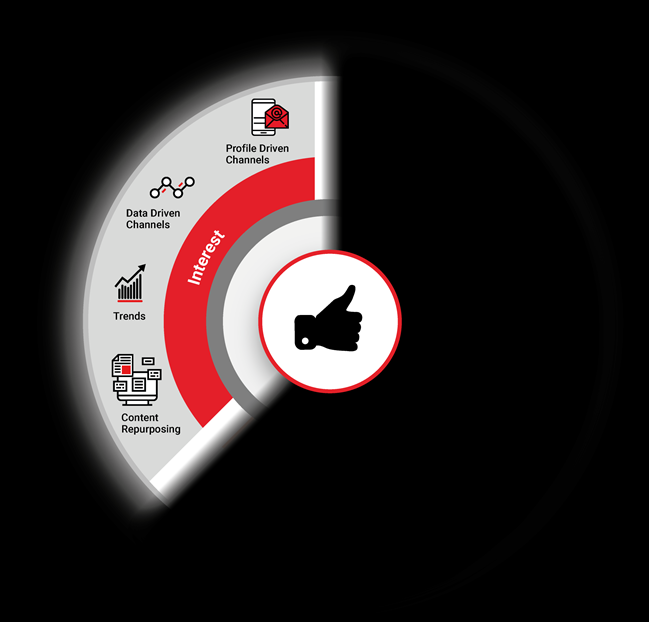
Driving interest in what you have to say is vital for demand generation, especially if you intend to leverage content and channels to intercept and retain your target audience’s attention.
What tactics will support Interest?
The amplification of your content is what drives interest.
According to a study from Salesforce, 72% of B2B customers expect vendors to offer personalized engagement.
This doesn’t just require uncovering the salient pain points, interests and challenges of your intended audience, it also involves selecting the right formats to aid discovery, relevancy and accessibility.
It starts with crafting your message to resonate with your audiences. This is greatly enhanced by applying the insights you’ve gathered. Your job then is to devise a content plan that plots out how you’re going to make this content useable across your digital ecosystem.
How does your content reach every touchpoint? How is your chosen format optimized for channel reach and engagement, what conversion journeys sustain long-term value exchanges that keep your audiences within your funnel?
Are you able to take your core message and shatter it into accessible fragments across your digital ecosystem?
How to put this into action:
Pillar Content: A long form whitepaper you’re going to promote for next quarter of the year
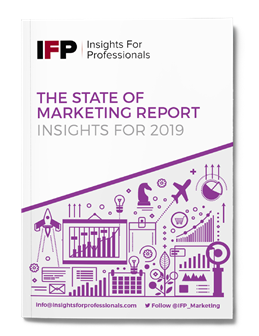
Think about all the ways you repurpose this content to support a range of tailored messages to reach users of different formats (Infographics, cheat sheets, social posts, guides, fact sheets…etc.)
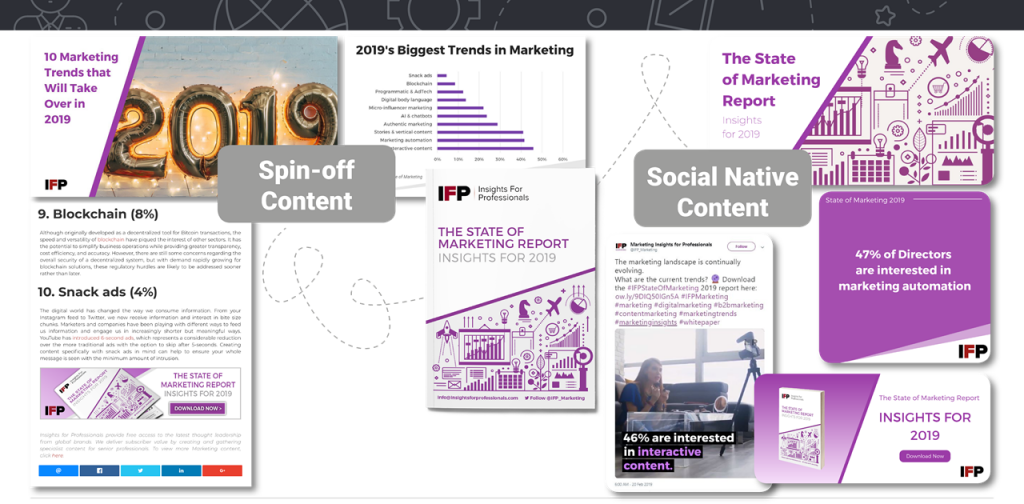
- Think about how customers will interact with the message in different contexts
- Are any of these sequential journeys? Can you introduce the content in one format and then offer deeper content later?
- What other long form editorial content types you can create from it? (Blogs, articles, reports…etc.)
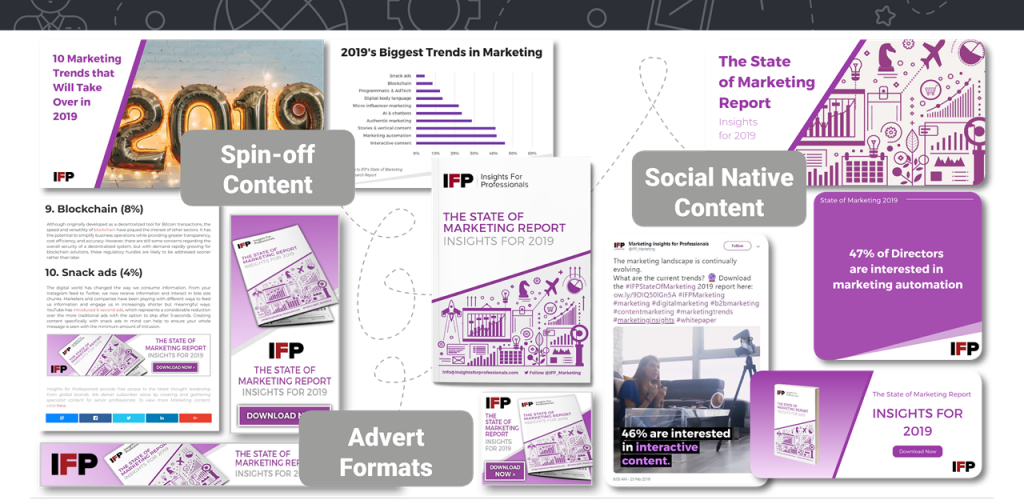
Then look at how you can create content that points back to this across all relevant social and native contexts.
Your aim should be to deliver high quality content across all relevant, available channels to create an immersive environment with logical conversion paths that support cumulative knowledge.
Plotting all your CTAs against your touchpoints is an effective method, that will enable you to identify any dead ends and optimize your journeys to decrease the chance of drop off.
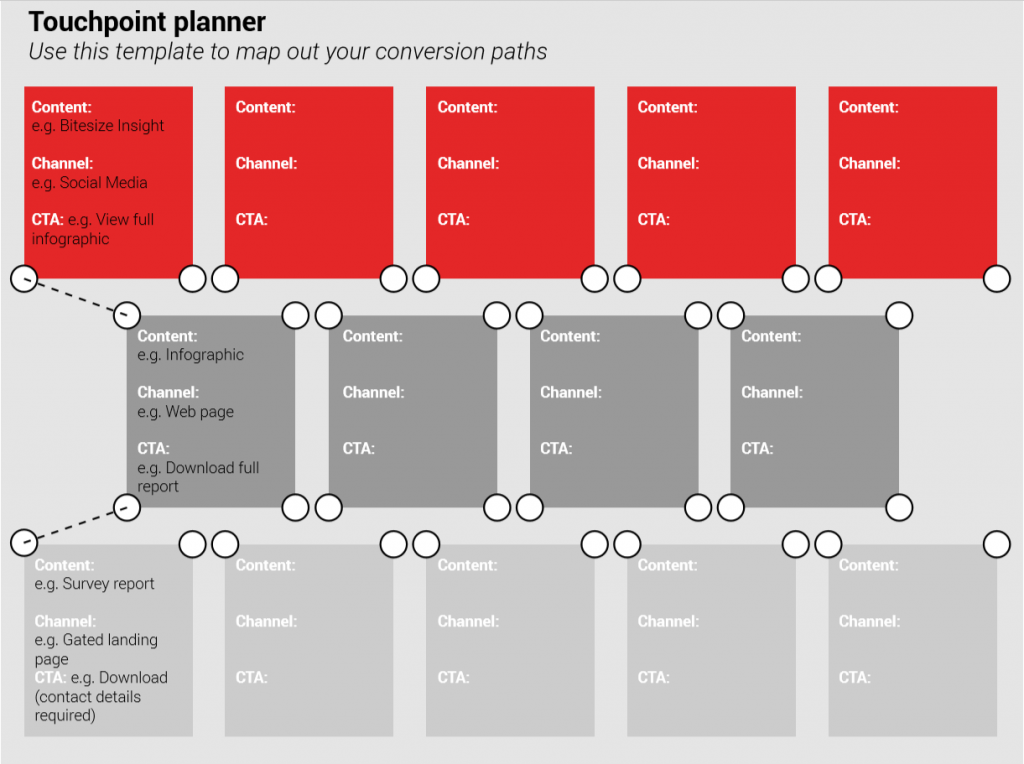
Some of this content wouldn’t just be broadcasting and linking back to the article, but rather made for that platform specifically.
Can you slice that key message down even further and add in the advertising formats that will amplify your content message?
These formats will grab attention with key info and generate the interest topic as a whole and demand for the deeper content pieces.
Think about how customers will interact with the message in different contexts. Each time you can get a customer to recall your brand, and associate it with a message, it helps buyer recognition. Cross channel touchpoints help achieve this and create a deeper level of recognition throughout the journey.
If your prospects are immersed in the message that interests them then they will likely engage with your brand.
This leads us onto our third component of the marketing funnel…
ENGAGEMENT
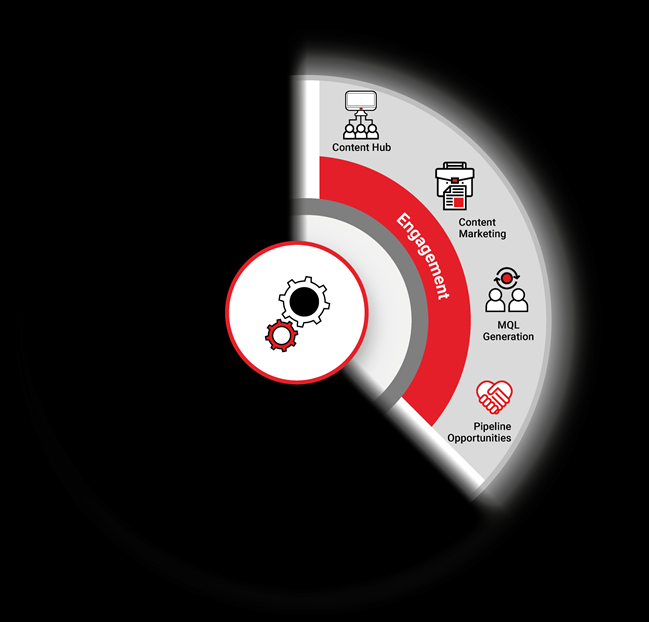
Engagement comes in many forms of interactions, at multiple points in the buyer cycle. When it comes to individual content assets, there are many metrics you could look at to measure these engagements. However, there is no single metric or set of metrics that will be applicable across all the content you create. For example, short landing pages with a lead gen call-to-action should be measured completely differently to a long-form technical whitepaper.
Define what the objective is for each piece of content, and then you’ll know how to measure it. Importantly, you’ll also know which data to ignore. If a piece of content is designed to get late stage prospects to finally place an order, the number of social shares isn’t relevant. Equally, you will struggle to calculate conversion rates for content designed to attract early stage website traffic.
Most demand strategies leverage lead generation to translate engagement into leads for a nurture program that will accelerate the path to purchase. Decide where these engagement points lie within your content and build out optimized conversion paths with your landing pages.
For example, you might want to gate premium long form content such as your whitepapers. Once they convert you might want to enter them into an email workflow that delivers more related content to your reader straight to their inbox.
Remember engagement is about gaining and sustaining attention. Effective demand generation leverages touchpoints to keep your audiences in perpetual motion towards your next conversion goal. To do this successfully you must always anticipate their next step, providing a clear logical path from A to B along with relevant, accessible content.
The reality is that different prospects across the decision making unit will come to your content in different ways, interact with various assets, and the ultimate goal is to encourage this!
You want to create an environment where your content is available and helpful for all personas and meets each of their information needs.
If you’ve managed this, don’t stop! They’re not done at MQL, or even SQL. Keep the nurture flowing and by pathing out immersive content journeys that gives that access to what they want, when they need it.
If you have really engaged prospects that aren’t gliding through your sales pipeline don’t worry, they could be evangelising you internally, or keeping you in mind for future projects.
Let them binge on your content – each of these touchpoints and engagements gives you more actionable data

Which enriches your insight
Which you can use to drive interest
To deliver more engagement
Which gives you data…
The idea of looking at the top down perspective of the marketing funnel is to think less about how we want to sell to the client and more about how they are seeking information.
Not just what we want to tell them, but about what they want to hear, and how they want to hear it.
Find this resource useful? To celebrate a new season of content we’ve just released our latest whitepaper: 7 Pillars of Successful Demand Generation


